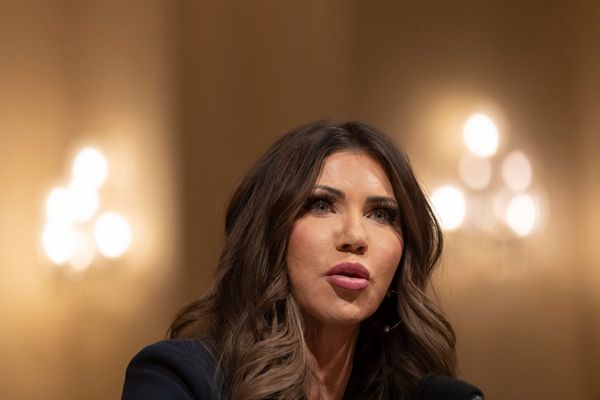
For the first time in the history of the Press Freedom Index, published annually by Reporters Without Borders, the conditions for practising journalism are “difficult” or “very serious” in over half of the world’s countries and satisfactory in fewer than one in four.
For over 10 years, the report noted, the results have warned of a worldwide decline in press freedom. But a new low point has emerged this year: the average score of all assessed countries fell below 55 points, falling into the category of a “difficult situation”. More than six out of 10 countries (112 in total) have seen their overall scores slip.
While India has improved its position for two years in a row, this time by eight spots, the US has slipped two spots.
Meanwhile, Palestine, despite being the “world’s most dangerous state for journalists” as per the report, is still far ahead of countries like Russia, China, Russia, and Vietnam with a rank of 163. It’s not the first time that such a trend has been observed by the report.
But scores are far from perfect
The RSF’s ranking is based on five indicators: political context, legal framework, economic context, sociocultural context and safety of journalists. Countries are first scored and then ranked on each of these five indicators. The overall ranking is decided by the average score.
To compile this index, RSF prepared a questionnaire linked to these five indicators of the state of press freedom. The questionnaire was sent to partner outfits and a network of 150 correspondents around the world, and to journalists, researchers, jurists and human rights activists. A scale devised by the organisation was then used to give a country score to each questionnaire.
But the scores are far from perfect.
Palestine, for example, fared much better than Pakistan, Bhutan, Turkey, Cambodia, Venezuela, Egypt, and China, among others, in terms of the economic context with a rank of 152.
This, despite the report noting that more than 80 percent of Gaza’s population, including hundreds of journalists, are “displaced and living in tents and with virtually no humanitarian aid permitted”. The majority of independent and semi-independent media outlets are financially unstable, the report noted, adding that Israeli airstrikes have destroyed most telecommunications and media infrastructure.
Despite the report calling it the world’s most dangerous country for journalists, Palestine still fares better on the security index as compared to Syria, North Korea and Eritrea.
“In 2024, Palestine became the most dangerous country in the world for journalists. Close to 200 reporters were killed by the Israeli army in Gaza in the first 18 months of war, including at least 42 slain while doing their job, and dozens more detained in Israeli prisons. Trapped in the enclave, journalists in Gaza have no shelter and lack everything, including food and water. In the West Bank, journalists are routinely harassed and attacked by both settlers and Israeli forces, but repression reached new heights with a wave of arrests after 7 October, when impunity for crimes committed against journalists became a new rule.”
Palestine ranks 154 on the political indicator, 156 on the legal and social frameworks, and 177 in terms of safety of journalists.
Israel’s war on Gaza has been the deadliest conflict for media workers ever recorded, a report published this year by the Watson Institute for International and Public Affairs’ Costs of War project found. The strikes have left more media persons dead than both world wars, the Vietnam War, the wars in Yugoslavia and the United States war in Afghanistan combined, the report said.
Palestinian journalists had earlier accused the RSF of whitewashing the image of the Israeli “occupation”.
RSF, on its part, had earlier said that Israel was responsible for a third of journalists killed in 2024. It has also filed several complaints in the International Criminal Court for Israel’s crimes against journalists.
Economic pressure a leading threat
Meanwhile, the United States has dropped only two places to a record low of 57, with the watchdog accusing US President Donald Trump of overseeing a “troubling deterioration in press freedom”. Under Trump, journalists and media outlets have faced increased restrictions and pressures, in terms of access, funding, and investigations.
The report has also raised alarm about economic pressure being a pressing concern for most media outlets worldwide. It further cited that serious funding cuts are an additional blow to the media economy, which is already weakened by the dominance that tech giants such as Google, Apple, Facebook, Amazon and Microsoft have over the dissemination of information.
“These largely unregulated platforms are absorbing an ever-growing share of advertising revenues that would usually support journalism,” the report stated.
According to data collected by RSF for the Index, in 160 out of the 180 countries assessed, media outlets achieve financial stability “with difficulty” – or “not at all.” The report warned that news outlets are shutting down due to economic hardship in nearly a third of countries globally, including the United States (ranked 57), Tunisia (ranked 129), and Argentina (ranked 87).
In the United States, which fell by two points from its previous ranking, the report cited a drop in economic indicators by more than 14 points in two years. An RSF survey in Arizona, Florida, Nevada, and Pennsylvania showed that local journalism is bearing the brunt of the economic downturn, and that it is “difficult to earn a living wage as a journalist.” President Donald Trump’s second term has already intensified this trend as false economic pretexts are used to bring the press into line, the report said.
This has led to the abrupt end to funding for the US RSF Agency for Global Media (USAGM), as well as the US Agency for International Development (USAID), throwing hundreds of news outlets into a critical state of economic instability and forcing some to shut down, particularly in Ukraine (ranked 62).
The report said that in many countries, including India, the concentration of media ownership in the hands of political magnates threatens media plurality and consolidates control in a few hands. In Lebanon (132), India, Armenia (34) and Bulgaria (70), many outlets owe their survival to conditional financing from individuals close to the political or business worlds, the report noted.
India’s improved ranking
India, ranked at 151 this year, had seen a slide over the past years, falling from 140 in 2019 to 161 in 2023. Pakistan, meanwhile, slipped to 158 from 150 in 2023 and 157 in 2022.
The Index ranks Eritrea at the bottom-most and Norway in the first position. The countries that rank below India include Bhutan, Pakistan, Turkey, Palestine, China, Russia, Afghanistan, Syria, and North Korea.
In 2022, replying to a question in the Rajya Sabha, Information and Broadcasting Minister Anurag Thakur spoke about why the government differed on the index. “The government does not subscribe to its (RSF) views and country rankings and does not agree to the conclusions drawn by this organisation for various reasons including very low sample size, little or no weightage to fundamentals of democracy, adoption of a methodology which is questionable and non-transparent, etc” he had said.
There’s no better time to underline the importance of a free press. On World Press Freedom Day 2025, power the independent media.
Newslaundry is a reader-supported, ad-free, independent news outlet based out of New Delhi. Support their journalism, here.







